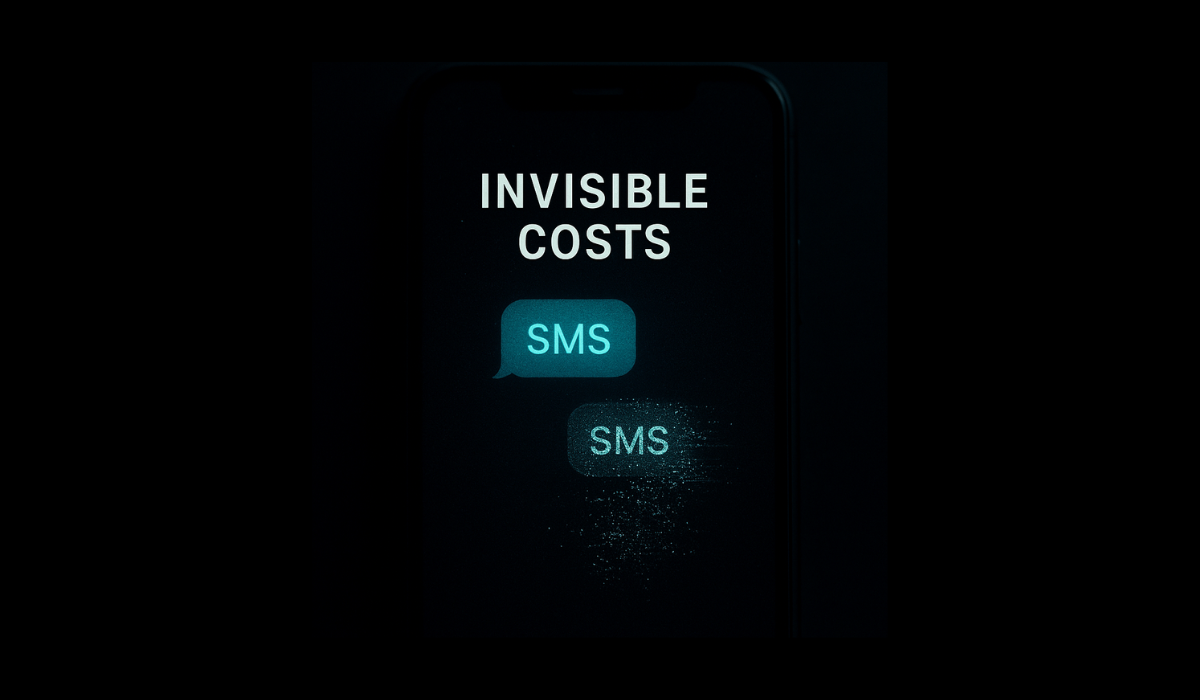Three months ago, your SMS campaigns hit 94% deliverability. Last month, 87%. This month, 81%.
How RCS Messaging Is Transforming the Way We Communicate

In today’s fast-paced world, communication plays a crucial role in connecting people across the globe. With the advent of technology, messaging has evolved significantly over the years. One such advancement is RCS (Rich Communication Services) messaging, which is revolutionizing the way we communicate. But what exactly is RCS messaging and how does it work?
RCS messaging is an upgraded version of the traditional SMS (Short Message Service) that allows users to send and receive messages with enhanced features and capabilities. Unlike SMS, which is limited to basic text messages, RCS messaging enables users to share high-quality images, videos, and audio files, as well as engage in group chats and participate in interactive conversations.
What Is RCS Messaging And How Does it Work?
RCS messaging operates on the IP (Internet Protocol) network, utilizing data connectivity rather than relying on the traditional cellular network used by SMS. This means that RCS messages are sent and received through an internet connection, providing a more seamless and efficient messaging experience.
To use RCS messaging, both the sender and the recipient need to have RCS-enabled devices and be connected to the internet. Once a message is sent, it is encrypted and transmitted to the recipient’s device, where it is decrypted and displayed in the messaging app. The recipient can then read the message, view any attached media, and respond accordingly.
Benefits of RCS Messaging
The transition from SMS to RCS messaging brings with it a wide range of benefits for users. One of the key advantages is the ability to send multimedia content in high resolution. With RCS messaging, you can share photos, videos, and audio files without compromising on quality. This opens up new possibilities for expressing oneself and sharing experiences with friends, family, and colleagues.
Another significant benefit of RCS messaging is the support for read receipts and typing indicators. With SMS, you’re left wondering whether your message has been read or if the recipient is typing a response. RCS messaging provides real-time feedback, letting you know when your message has been delivered, read, and when the recipient is composing a reply. This enhances the overall messaging experience by reducing uncertainty and improving communication efficiency.
Furthermore, RCS messaging allows users to engage in group chats, providing a platform for collaborative conversations and seamless coordination among team members or social circles. Group chats enable users to stay connected, share updates, and make plans in a more interactive and dynamic manner. This feature is particularly useful for businesses and organizations that rely on effective team communication.
RCS Messaging vs SMS
While SMS has been the standard for text messaging for decades, RCS messaging offers a significant upgrade in terms of features and capabilities. Unlike SMS, which is limited to 160 characters, RCS messaging allows for longer messages, removing the need for multiple texts to convey a complete thought or idea. This makes conversations more fluid and natural, without the constraints of character limits.
Another key difference between RCS messaging and SMS is the ability to send and receive multimedia content. With SMS, you’re limited to text-only messages, while RCS messaging allows for the sharing of pictures, videos, and audio files. This enables users to express themselves more creatively and share rich media experiences, enhancing the overall messaging experience.
Furthermore, RCS messaging supports read receipts, delivery notifications, and typing indicators, providing users with real-time feedback on the status of their messages. SMS, on the other hand, lacks these features, leaving users in the dark about the delivery and read status of their messages. This added transparency and responsiveness make RCS messaging a more reliable and efficient communication tool.
The Future of Messaging: How RCS Messages are Transforming Communication
As technology continues to advance, messaging is evolving beyond simple text-based conversations. RCS messaging is at the forefront of this transformation, offering a glimpse into the future of communication. With its rich features and seamless integration, RCS messaging is set to revolutionize the way we connect and interact with one another.
One of the key aspects of RCS messaging that sets it apart is its ability to integrate with other messaging platforms. This means that RCS messaging can be used across different devices and operating systems, ensuring a consistent and unified messaging experience. Whether you’re using a smartphone, tablet, or computer, RCS messaging provides a seamless transition between devices, allowing you to pick up conversations where you left off.
Additionally, RCS messaging opens up new opportunities for businesses to engage with their customers. With its multimedia capabilities and interactive features, RCS messaging enables businesses to deliver rich content, personalized promotions, and interactive experiences directly to their customers’ messaging apps. This creates a more engaging and immersive marketing experience, fostering stronger connections and driving customer loyalty.
Moreover, RCS messaging has the potential to revolutionize customer service and support. With its interactive features, businesses can provide real-time assistance, answer queries, and resolve issues directly through the messaging platform. This eliminates the need for customers to navigate through complex phone menus or wait on hold, resulting in a more efficient and satisfying customer experience.
RCS Messaging Features and Capabilities
RCS messaging offers a wide range of features and capabilities that enhance the overall messaging experience. Some of the key features include:
- Enhanced Multimedia Sharing: With RCS messaging, you can share high-quality photos, videos, and audio files, allowing for a more expressive and engaging conversation.
- Group Chats: RCS messaging enables users to participate in group chats, facilitating seamless collaboration and coordination among team members or social groups.
- Read Receipts and Typing Indicators: RCS messaging provides real-time feedback on the status of messages, letting you know when your message has been delivered, read, and when the recipient is typing a response.
- Interactive Content: RCS messaging supports interactive content, such as buttons, carousels, and suggested replies, allowing for a more dynamic and engaging conversation.
- Integration with Other Messaging Platforms: RCS messaging can be integrated with other messaging platforms, ensuring a consistent and unified messaging experience across devices and operating systems.
How Businesses Can Leverage RCS Messaging for Marketing and Customer Engagement
As businesses strive to connect with their customers in a meaningful way, RCS messaging offers a powerful tool for marketing and customer engagement. By leveraging the rich features and capabilities of RCS messaging, businesses can create personalized and immersive experiences that drive customer loyalty and boost sales.
One of the key ways businesses can utilize RCS messaging is by delivering rich content directly to their customers’ messaging apps. This could include product catalogs, promotional videos, or interactive experiences that showcase the benefits and features of their offerings. By providing this content within the messaging platform, businesses can capture the attention of their customers in a more engaging and convenient manner.
Another effective strategy is to use RCS messaging to send personalized promotions and offers to targeted customers. By analyzing customer data and preferences, businesses can tailor their messages to specific segments, ensuring that the promotions are relevant and compelling. This personalized approach not only increases the chances of conversion but also enhances the customer experience by providing valuable and timely offers.
Furthermore, RCS messaging can be used to facilitate customer support and assistance. By integrating chatbots or live chat features into RCS messaging, businesses can provide real-time assistance to their customers directly through the messaging platform. This enables customers to get their queries answered and issues resolved quickly and conveniently, resulting in a more satisfying and efficient customer experience.
Implementing RCS Messaging in Your Business Communication Strategy
Integrating RCS messaging into your business communication strategy requires careful planning and execution. Here are some key steps to consider:
- Evaluate Your Audience: Understand your target audience and their messaging preferences. Determine whether RCS messaging is a suitable channel for reaching your customers and meeting their communication expectations.
- Choose the Right Platform: Research and select a reliable RCS messaging platform that aligns with your business goals and requirements. Consider factors such as scalability, integration capabilities, and customer support.
- Plan Your Content Strategy: Define the type of content you want to deliver through RCS messaging. Identify the key messages, offers, and promotions that will resonate with your target audience and drive engagement.
- Personalize Your Messages: Leverage customer data and segmentation to personalize your RCS messages. Tailor your content and promotions to specific customer segments, ensuring relevance and increasing the chances of conversion.
- Monitor and Measure: Continuously monitor the performance of your RCS messaging campaigns and measure their impact. Analyze metrics such as engagement rates, conversion rates, and customer feedback to identify areas for improvement and optimize your communication strategy.
The Challenges and Obstacles of RCS Messaging Adoption
While RCS messaging holds immense potential for transforming communication, there are challenges and obstacles that hinder its widespread adoption. Some of the key challenges include:
- Device and Network Compatibility: RCS messaging requires both the sender and the recipient to have RCS-enabled devices and be connected to the internet. This compatibility requirement limits the reach of RCS messaging, as not all devices and networks support it.
- Standardization and Interoperability: RCS messaging is still in the process of being standardized and adopted by different carriers and service providers. This lack of interoperability poses challenges for seamless communication across different networks and platforms.
- Privacy and Security Concerns: With the increased use of messaging for personal and business communication, privacy and security concerns become crucial. Ensuring the protection of user data and messages is essential for gaining user trust and driving adoption.
- Awareness and Education: Many users are unaware of RCS messaging and its benefits. Educating users about the features and capabilities of RCS messaging is crucial for driving adoption and encouraging its use.
Despite these challenges, the future of messaging looks promising with RCS messaging leading the way. As technology continues to evolve and more devices and networks support RCS messaging, we can expect a more connected and interactive communication landscape.
Conclusion
RCS messaging is transforming the way we communicate by offering enhanced features and capabilities beyond traditional SMS. With its ability to send multimedia content, support group chats, and provide real-time feedback, RCS messaging provides a more engaging and efficient messaging experience. Businesses can leverage RCS messaging for marketing and customer engagement, delivering personalized content and promotions directly to their customers’ messaging apps. As RCS messaging continues to evolve and gain wider adoption, it holds the potential to revolutionize the future of communication.
More Articles


SMS Marketing, SMS, sms carrier, tcpa
Why SMS Marketing Might Be Dead in 5 Years—If Carriers Keep This Up
For over a decade, SMS marketing has been the bedrock of mobile engagement. With open rates often cited above 95% and near-universal device compatibility, it seemed indestructible. Yet today, industry insiders are sounding the...

SMS, sms carrier, tcpa, tcpa restrictions
Are SMS Compliance Rules Silencing Free Speech in Marketing?
Few marketing channels are as tightly controlled — yet so widely used — as SMS. Behind every promotional text lies an invisible gauntlet of carrier rules, algorithmic filters, and registration barriers. Most recipients never...